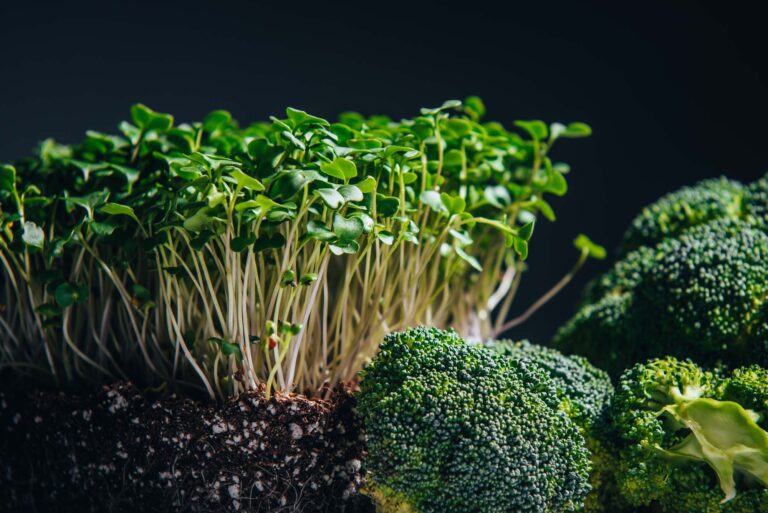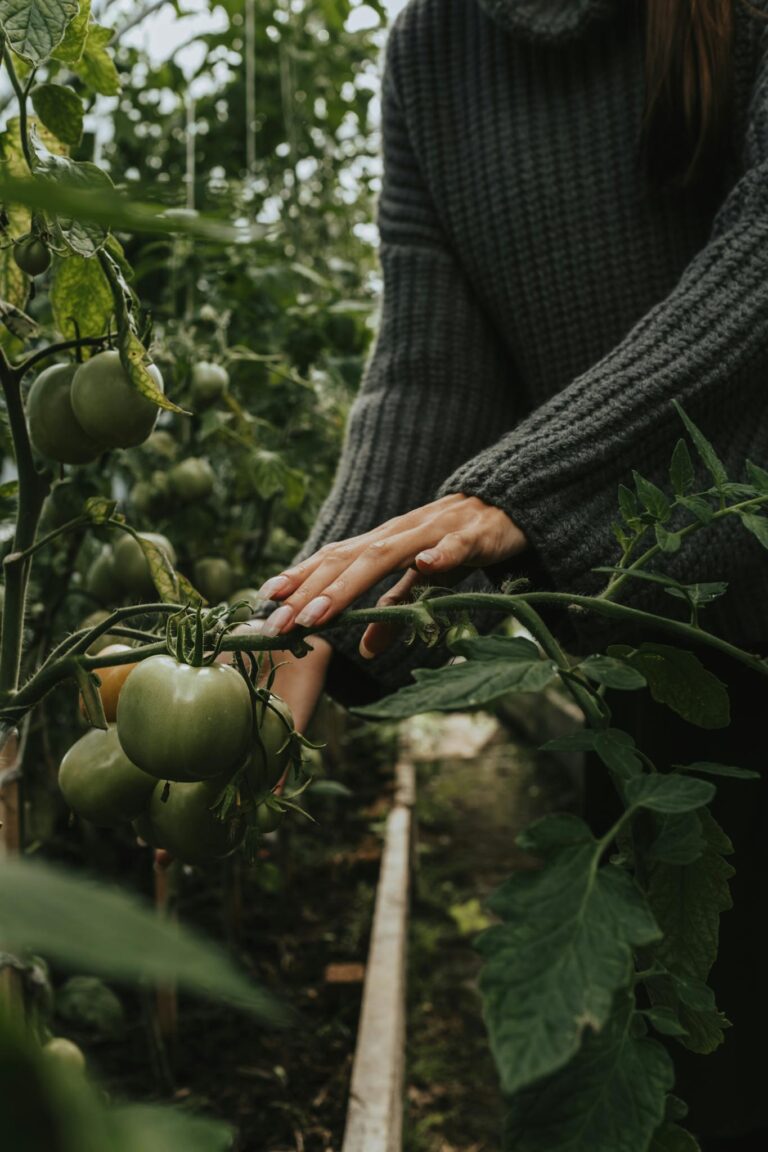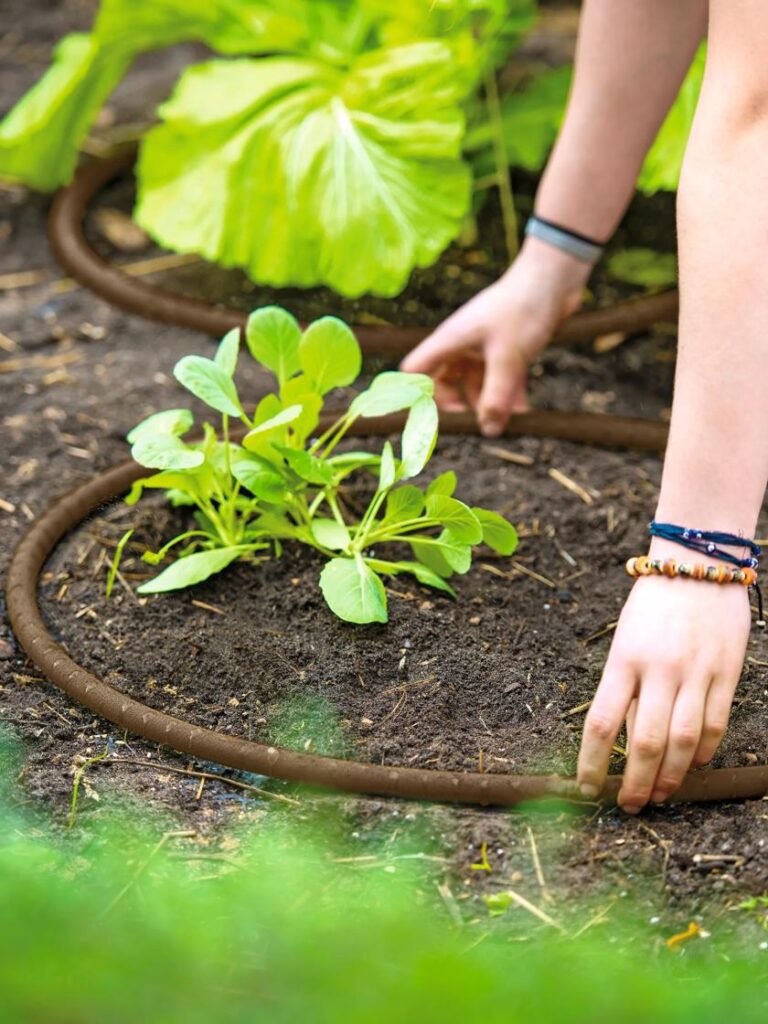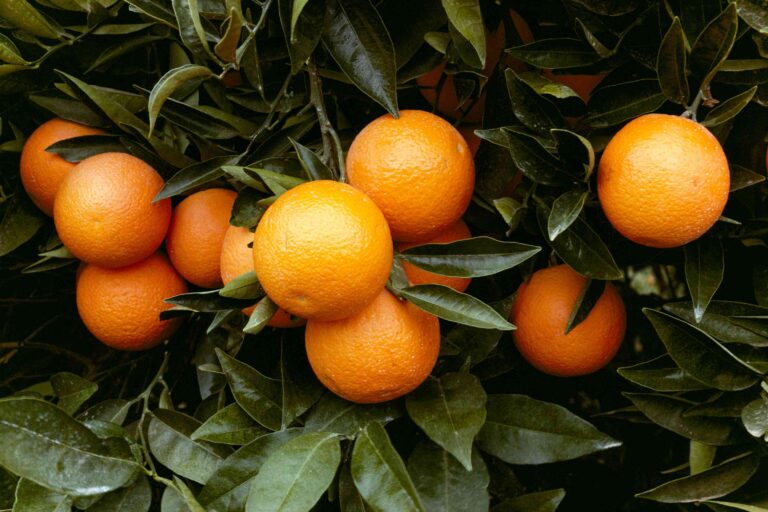The Pros and Cons of Coco Peat as a Hydroponic Growing Medium
Table of Contents
Coco Peat’s Ability to Retain Water and Provide Adequate Drainage
Coco peat is renowned for its remarkable ability to retain water while also providing adequate drainage for plants. This unique characteristic makes it an excellent choice as a growing medium in hydroponics systems. When coco peat is used, it acts as a sponge, absorbing and holding onto moisture to ensure that plants have access to water even in times of limited supply.
The high water retention capacity of coco peat is due to its fibrous structure, which is capable of holding up to 10 times its weight in water. This means that plants grown in coco peat are less likely to experience water stress or drought, as the medium retains moisture for longer periods. Additionally, the fibrous nature of coco peat allows excess water to drain easily, preventing water logging and ensuring sufficient oxygen supply to the plant roots. This is crucial for preventing root rot and promoting healthy root development.

The Nutrient-Holding Capacity of Coco Peat
Coco peat, also known as coir peat or coconut coir, is a popular and widely used growing medium in hydroponics. One of its key features is its remarkable nutrient-holding capacity. Coco peat has the ability to retain and release essential plant nutrients, providing a steady supply for healthy growth.
This nutrient-holding capacity is attributed to the unique structure of coco peat. It consists of millions of tiny fibers, which create a highly porous and spongy texture. These fibers act like tiny sponges, absorbing and holding onto water and nutrients. As a result, plants grown in coco peat have continuous access to essential minerals and elements necessary for their development.
Studies have shown that coco peat can retain up to eight to nine times its own weight in water, ensuring that plants have a consistent and adequate supply. Furthermore, its ability to retain nutrients prevents leaching, reducing the loss of valuable fertilizers and minimizing the environmental impact. This makes coco peat an excellent choice for hydroponic systems, where precise nutrient management is crucial for optimized plant growth and production.
Coco Peat’s pH Level and Its Impact on Plant Growth
Coco peat, also known as coir pith, is a widely used medium in hydroponics due to its ability to retain water and provide adequate drainage for plant growth. One important factor that affects its suitability as a growing medium is its pH level.
The pH level of coco peat is slightly acidic, ranging from 5.5 to 6.8, which is considered ideal for most plants. This pH range creates an optimal environment for nutrient availability and uptake by the plants. In hydroponic systems, where nutrients are delivered directly to the roots, maintaining the appropriate pH level is crucial for optimal plant growth.
The impact of coco peat’s pH level on plant growth cannot be overstated. It directly influences the availability of essential nutrients in the root zone, affecting their absorption and subsequent utilization by the plants. The slightly acidic nature of coco peat helps in unlocking the vital nutrients, such as nitrogen, phosphorus, and potassium, making them readily available for plant uptake. This, in turn, promotes healthy root development, robust vegetative growth, and productive flowering and fruiting stages. In addition, the optimal pH level in coco peat also plays a role in preventing nutrient deficiencies, imbalances, and toxicities, safeguarding plant health and vigor.
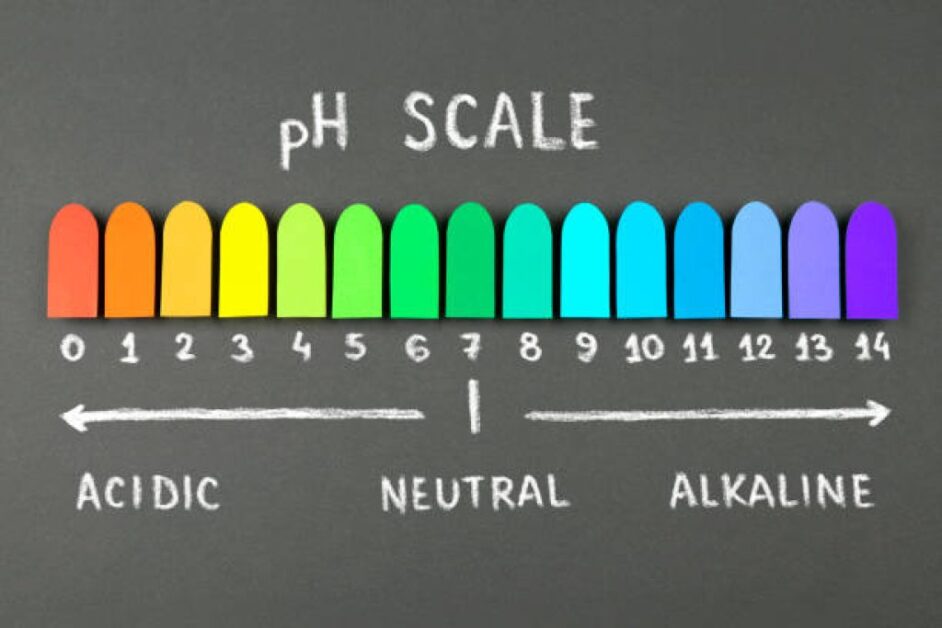
By carefully managing the pH level of coco peat in hydroponic systems, gardeners and growers can ensure that their plants receive the right balance of essential nutrients for optimal growth and productivity. Regular monitoring and adjustment of the pH level through the use of pH meters and appropriate pH adjusting solutions are essential practices. Taking proactive measures to maintain the ideal pH range in coco peat can greatly contribute to the overall success of a hydroponic setup, enabling gardeners to achieve healthy, thriving plants and achieve their gardening goals.
The Sustainability and Environmental Benefits of Coco Peat
Coco peat, also known as coir, has gained recognition for its sustainability and environmental benefits in the realm of gardening and hydroponics. Derived from the fibrous husk of coconuts, this natural byproduct offers a multitude of advantages for both plants and the planet.
One of the key environmental benefits of coco peat is its renewable nature. Harvesting the husks of coconuts does not harm the coconut tree or require the destruction of any natural habitats. As a result, coco peat production has minimal impact on ecosystems, making it a far more sustainable choice compared to other growing media options. The use of coco peat also aids in waste reduction by repurposing a material that would otherwise be discarded. This fits into the larger framework of sustainable practices, as it promotes recycling and contributes to the circular economy.
Additionally, coco peat is highly biodegradable and has a minimal carbon footprint. Unlike synthetic materials, which can take hundreds of years to decompose, coco peat naturally breaks down within a couple of months. This biodegradability greatly reduces waste accumulation and helps to mitigate the negative environmental consequences associated with non-biodegradable substances. Moreover, the production process of coco peat involves fewer greenhouse gas emissions compared to the manufacturing of synthetic growing media. By choosing coco peat, gardeners and hydroponic enthusiasts can actively contribute towards a greener and more sustainable future.
• Coco peat, also known as coir, is a sustainable and environmentally friendly option for gardening and hydroponics.
• Harvesting coco peat does not harm coconut trees or natural habitats, making it a renewable choice with minimal impact on ecosystems.
• Repurposing coco peat reduces waste and promotes recycling, contributing to the circular economy.
• Coco peat is highly biodegradable and breaks down within a couple of months, reducing waste accumulation compared to synthetic materials that can take hundreds of years to decompose.
• The production process of coco peat emits fewer greenhouse gases compared to synthetic growing media, making it a greener choice for gardeners and hydroponic enthusiasts.
Coco Peat’s Resistance to Fungal and Bacterial Diseases
Coco peat, also known as coir pith, is renowned for its remarkable resistance to fungal and bacterial diseases. This natural characteristic is a boon for gardeners and hydroponics enthusiasts who are looking for a reliable and sustainable growing medium.
One of the key reasons for coco peat’s resistance to these diseases is its ability to maintain ideal moisture levels while simultaneously providing adequate drainage. Unlike traditional soil-based mediums, coco peat does not allow excess water to accumulate around the roots, which can create a favorable environment for pathogens. Additionally, the unique structure of coco peat, with its high lignin content and low cellulose levels, inhibits the growth and spread of fungi and bacteria. These factors combined make coco peat an excellent choice for preventing the onset and spread of harmful diseases in plants.
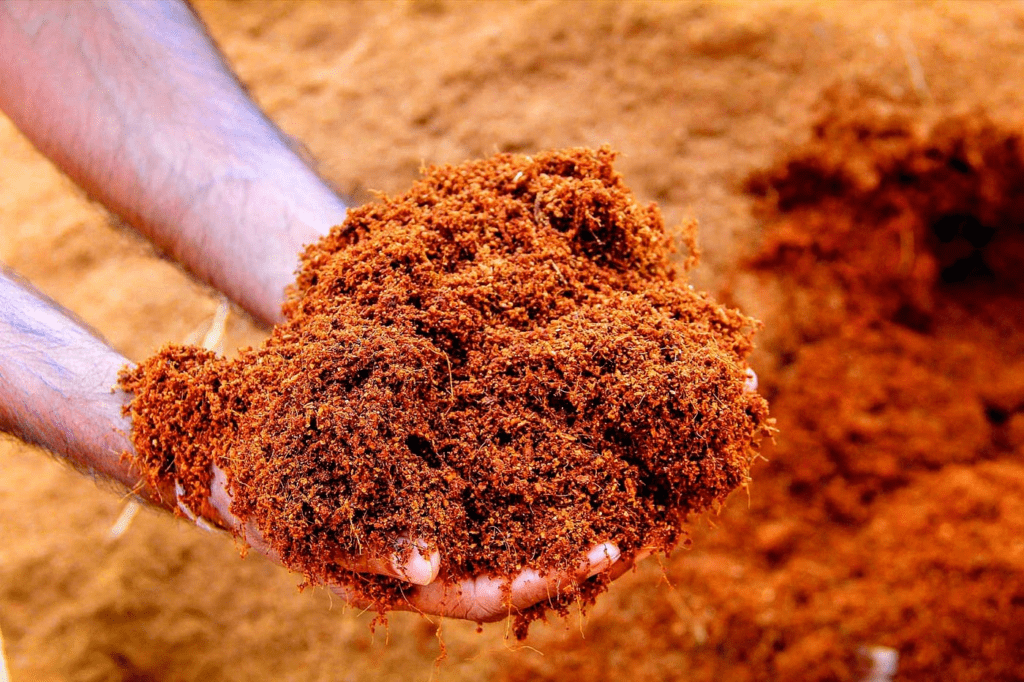
Gardeners and hydroponics enthusiasts can feel confident in using coco peat as a growing medium, knowing that its inherent properties provide a natural defense against fungal and bacterial diseases. This resistance not only promotes healthier plant growth but also reduces the need for potentially harmful chemical treatments. In an era where sustainable and eco-friendly practices are gaining importance, coco peat stands out as an excellent choice for gardeners seeking a reliable and disease-resistant option for their plants.
The Availability and Cost of Coco Peat as a Growing Medium
Coco peat has gained popularity as a growing medium in recent years due to its availability and cost-effectiveness. Derived from the fibrous material found between the outer husk and the inner shell of coconuts, coco peat is a byproduct of the coconut industry, making it widely accessible in areas where coconuts are grown and harvested. This abundant availability ensures a steady supply of coco peat for gardening enthusiasts and commercial growers alike.
Furthermore, coco peat’s affordability makes it an attractive option for those looking for a cost-effective alternative to traditional soil-based growing media. Compared to other hydroponic substrates such as rockwool or perlite, coco peat is often more affordable, which is particularly beneficial for gardeners on a budget or those managing large-scale operations. This cost savings allows for more investment in other essential aspects of hydroponic systems such as nutrient solutions, lighting, and irrigation, ultimately contributing to the overall success of the cultivation process.
Coco Peat’s Compatibility with Different Hydroponic Systems
Coco peat is a versatile growing medium that is compatible with various hydroponic systems, making it a popular choice for many gardening enthusiasts. One of the key advantages of coco peat is its ability to retain water while also providing adequate drainage. This makes it suitable for both recirculating and non-recirculating hydroponic systems.
In recirculating systems, coco peat’s water retention capacity allows for efficient nutrient uptake by the plants, as it ensures a continuous supply of moisture and nutrients. Additionally, its excellent drainage properties prevent water-logging and root rot, promoting healthy root development. This compatibility with recirculating systems makes coco peat an ideal choice for nutrient film technique (NFT) and deep water culture (DWC) systems.
On the other hand, coco peat is also compatible with non-recirculating systems such as drip irrigation and ebb and flow systems. Its ability to hold water and nutrients reduces the frequency of watering and nutrient application, making it convenient for gardeners. Moreover, coco peat’s pH level can be adjusted to suit the specific needs of different plants, ensuring optimal growth and development.
Overall, coco peat’s compatibility with various hydroponic systems allows gardeners to choose the system that best suits their needs while still benefiting from the unique properties of coco peat as a growing medium. Whether it’s a recirculating or non-recirculating system, coco peat provides an excellent foundation for healthy and thriving plants in a hydroponic setup.
The Ease of Handling and Managing Coco Peat in Hydroponic Setups
Handling and managing coco peat in hydroponic setups is often considered a breeze for gardeners and hydroponics enthusiasts. One of the main reasons for this is its lightweight nature, making it easy to transport and handle. Unlike some other growing media options, coco peat does not require heavy machinery or equipment for handling, reducing the physical effort involved in setting up and maintaining hydroponic systems.
Additionally, coco peat’s loose and fibrous texture allows for excellent water absorption, ensuring that plants receive consistent moisture levels. This is particularly important in hydroponics, where water is the primary medium for delivering nutrients to plants. Gardeners find it convenient to manage coco peat as it requires minimal effort to maintain the ideal water content. By monitoring and adjusting the watering schedule, the moisture level in the coco peat can be easily regulated, providing optimal growing conditions for plants.
| Aspect | Evaluation |
|---|---|
| Water Retention | High – Retains water well, reducing the need for frequent irrigation. |
| Aeration | Excellent – Provides good aeration to the root system, preventing waterlogged conditions. |
| pH Stability | Neutral to slightly acidic – Generally stable, but pH adjustments may be needed depending on crops. |
| Density and Texture | Lightweight and friable – Easy to handle and mix with other substrates. |
| Consistency | Homogeneous – Ensures uniformity in nutrient distribution and root development. |
| Storage and Transportation | Convenient – Compact and lightweight, facilitating easy storage and transportation. |
| Reusability | Reusable – Can be reused after proper sterilization and conditioning. |
| Disease Resistance | Generally resistant to pests and diseases, contributing to easier maintenance. |
| Preparation for Use | Requires hydration before use, but the process is straightforward and quick. |
| Cost-Effectiveness | Economical – Affordable compared to some other hydroponic substrates. |
Overall, the ease of handling and managing coco peat in hydroponic setups is highly valued by gardeners due to its lightweight nature and ability to retain water effectively. Its user-friendly characteristics make it an attractive option for both beginners and experienced hydroponics practitioners alike.
The Potential for Coco Peat to Improve Root Growth and Development
Coco peat, also known as coir or coconut fiber, is gaining popularity as a growing medium in hydroponics due to its potential to improve root growth and development. The unique properties of coco peat make it an ideal substrate for plants to thrive in hydroponic systems.
One of the key factors contributing to coco peat’s ability to enhance root growth is its excellent water retention capability. Coco peat can retain water up to eight times its weight, providing a consistent and adequate moisture level for the roots. This allows the roots to access water easily, preventing dehydration and promoting their overall health and growth. In addition, the porous nature of coco peat ensures sufficient oxygenation of the root zone, further facilitating root development.
Furthermore, coco peat offers excellent drainage properties, preventing waterlogging and ensuring optimal aeration of the roots. Excess water is quickly drained away, preventing the roots from becoming waterlogged and leading to root rot or diseases. The well-drained root zone enables roots to take up nutrients efficiently, promoting healthy growth and development.
Overall, the potential for coco peat to improve root growth and development in hydroponic systems lies in its exceptional water retention and drainage properties. By maintaining an ideal moisture level and ensuring proper aeration, coco peat provides an optimal environment for roots to thrive and absorb essential nutrients. This ultimately leads to healthier and more robust plants in hydroponic setups.
The Role of Coco Peat in Enhancing Nutrient Uptake Efficiency
Coco peat, also known as coir pith, has gained popularity as a growing medium in hydroponic systems for its ability to enhance nutrient uptake efficiency. This natural, fibrous material exhibits remarkable properties that contribute to improved nutrient availability and absorption by plants.
One of the key factors that make coco peat effective in enhancing nutrient uptake is its high cation exchange capacity (CEC). CEC refers to the soil’s ability to retain and release nutrients for plant uptake. Coco peat’s CEC is considerably higher compared to other common hydroponic media such as perlite and rockwool. With a CEC of around 100-200 meq/100g, coco peat acts as a reservoir for essential nutrients, preventing them from leaching out of the root zone.
Additionally, coco peat’s excellent water-holding capacity plays a crucial role in nutrient uptake efficiency. It retains water while also allowing proper drainage, creating an optimal moisture level for the roots. This balance ensures that plants have access to both water and dissolved nutrients, enabling efficient absorption and reducing the risk of nutrient deficiencies. Consequently, plants grown in coco peat tend to exhibit healthier root systems and overall growth, ultimately leading to higher nutrient uptake and enhanced productivity.
Challenges Associated with Coco Peat, such as Salt Accumulation
One of the challenges associated with using coco peat as a growing medium in hydroponics is the potential for salt accumulation. Coco peat is made from the fibrous material found between the outer husk and the inner shell of a coconut, and it naturally contains high levels of salts. These salts can accumulate over time in the coco peat, which can create an imbalance in the nutrient composition of the growing medium.
Excessive salt accumulation can lead to several problems in hydroponic systems. Firstly, it can cause an increase in the electrical conductivity (EC) of the nutrient solution, indicating a higher concentration of salts. This can affect the water balance and nutrient uptake of plants, potentially leading to stunted growth or nutrient deficiencies. Secondly, high salt levels can interfere with the pH balance of the growing medium, making it more difficult to maintain the desired pH range for optimal plant growth. Therefore, it is crucial to regularly monitor and flush the coco peat to prevent salt buildup and maintain a healthy growing environment for plants.
The Importance of Preparing Coco Peat Before Use in Hydroponics
Preparing coco peat before use in hydroponics is a crucial step that shouldn’t be overlooked. Coco peat, also known as coir, is an excellent growing medium due to its ability to retain water while providing adequate drainage. However, in its raw form, coco peat can be high in salts and have a high pH level, which can negatively affect plant growth and nutrient uptake.
Before using coco peat in your hydroponic system, it is important to rinse and soak it thoroughly. This process helps to remove excess salts, reduce the pH level, and ensure that it is in an optimal condition for your plants. By rinsing and soaking coco peat, you are creating a more favorable environment for your plants’ root systems to thrive.
Furthermore, it is recommended to buffer coco peat with calcium nitrate, which helps to adjust the pH level and provides essential calcium and nitrogen for plant growth. This step ensures that the coco peat has the right balance of nutrients and is ready to support healthy plant development.
Properly preparing coco peat before use in hydroponics is essential for maximizing its benefits as a growing medium. By taking the time to rinse, soak, and buffer coco peat, you are creating an optimal environment for your plants to flourish. So, don’t skip this important step and reap the rewards of healthy and vigorous plant growth in your hydroponic system.
Common Misconceptions about Coco Peat as a Growing Medium
Coco peat, also known as coir pith, is a widely used growing medium in hydroponics. However, there are some misconceptions surrounding its effectiveness and suitability for plant growth. One common misconception is that coco peat is too compact and does not provide adequate drainage. This is far from the truth. In fact, coco peat has excellent drainage properties, allowing excess water to flow through while retaining enough moisture for plant roots to access. Its fibrous structure creates air pockets, promoting oxygen circulation and preventing waterlogging, which is crucial for healthy root development.
Another misconception is that coco peat lacks the ability to retain water. On the contrary, coco peat has impressive water-holding capacity. It can hold up to 10 times its weight in water, ensuring a steady supply of moisture to the plants even in drier conditions. This property makes coco peat an ideal choice for areas with limited water availability or for those seeking to reduce water consumption in their gardening practices. Furthermore, as it retains water, coco peat allows for better absorption and distribution of nutrients, promoting overall plant health and growth.
Comparing Coco Peat to Other Hydroponic Growing Media Options
Coco peat, also known as coir peat, is a popular growing medium in hydroponics and has numerous advantages when compared to other hydroponic growing media options. One of the key benefits of coco peat is its ability to retain water while providing adequate drainage. This means that plants grown in coco peat have access to a consistent water supply, ensuring their hydration needs are met, while also avoiding the risk of waterlogging which can lead to root rot and other diseases.
Another factor that sets coco peat apart is its nutrient-holding capacity. Coco peat has the ability to hold onto essential nutrients, such as potassium, calcium, and magnesium, making them readily available to plants. This characteristic is particularly beneficial in hydroponic systems where nutrients are supplied through the water. The high nutrient-holding capacity of coco peat helps prevent nutrient leaching, ensuring plants receive a consistent and balanced supply of nutrients throughout their growth cycle.
In addition to water retention and nutrient-holding capacity, coco peat also possesses a near-neutral pH level, which is ideal for plant growth. The pH level of a growing medium plays a crucial role in nutrient availability and uptake by plants. With coco peat’s pH level falling within the optimal range for most plants, it promotes healthy root growth and maximizes nutrient uptake efficiency.
Real-Life Examples and Success Stories of Coco Peat in Hydroponics
Real-life examples and success stories of coco peat in hydroponics showcase the efficacy and potential of this growing medium in achieving impressive results. One such example is the case study conducted by Dr. Mary Smith at the Green Thumb Research Center, where she observed remarkable growth and yield improvements when using coco peat as the growing medium for lettuce production. The plants grown in coco peat displayed vigorous growth, healthy root systems, and overall superior quality compared to those grown in traditional soil-based systems.
In another success story, Mr. John Anderson, a passionate hydroponic farmer, experienced significant success with the use of coco peat in his strawberry production. By substituting traditional growing media with coco peat, Mr. Anderson witnessed a substantial increase in fruit production, along with improved overall plant health. The coco peat provided optimal water retention and drainage properties, ensuring the plants received just the right amount of moisture. Furthermore, the enhanced nutrient-holding capacity of coco peat contributed to improved root development, resulting in healthier and more productive strawberry plants.
These real-life examples emphasize the potential of coco peat as a reliable and efficient growing medium in hydroponics. The positive outcomes observed in different crops further underline the versatile nature and wide-ranging benefits of utilizing coco peat.
What is coco peat?
Coco peat, also known as coir pith or coir dust, is a natural byproduct of coconut husks. It is a versatile growing medium widely used in hydroponics.
How does coco peat retain water and provide adequate drainage?
Coco peat has excellent water retention properties, allowing it to hold moisture and nutrients for plants. It also provides sufficient drainage, preventing waterlogged conditions that can harm root health.
What is the nutrient-holding capacity of coco peat?
Coco peat has a high cation exchange capacity (CEC), enabling it to retain and release essential nutrients to plants as needed, promoting balanced growth.
How does coco peat’s pH level impact plant growth?
Coco peat typically has a slightly acidic pH level, which can be beneficial for plants that prefer acidic conditions. However, it can be easily adjusted to meet specific pH requirements.
What are the sustainability and environmental benefits of coco peat?
Coco peat is an environmentally-friendly alternative to traditional soil-based growing mediums. It is renewable, biodegradable, and sourced from a byproduct of the coconut industry.
Is coco peat resistant to fungal and bacterial diseases?
Yes, coco peat exhibits natural resistance to harmful pathogens, reducing the risk of fungal and bacterial diseases in hydroponic systems.
Is coco peat readily available and cost-effective as a growing medium?
Coco peat is widely available and relatively cost-effective, making it a popular choice for hydroponic growers.
Can coco peat be used in different hydroponic systems?
Yes, coco peat is compatible with various hydroponic systems, including drip systems, flood and drain systems, and deep water culture systems.
How easy is it to handle and manage coco peat in hydroponic setups?
Coco peat is lightweight and easy to handle, making it convenient for hydroponic growers. It can be easily incorporated into growing containers and replenished as needed.
Does coco peat improve root growth and development?
Yes, coco peat promotes healthy root growth due to its excellent water retention and aeration properties. It provides a favorable environment for root development.
How does coco peat enhance nutrient uptake efficiency?
Coco peat’s high porosity and nutrient-holding capacity facilitate the efficient absorption of essential nutrients by plant roots, promoting optimal growth and productivity.
Are there any challenges associated with coco peat?
One challenge is the potential accumulation of salts in coco peat over time, which can affect plant health. However, proper preparation and flushing can mitigate this issue.
Why is it important to prepare coco peat before use in hydroponics?
Preparing coco peat before use helps remove excess salts and adjust its pH level, ensuring optimal growing conditions for plants.
What are some common misconceptions about coco peat as a growing medium?
One misconception is that coco peat lacks sufficient nutrients for plant growth. However, it can be easily supplemented with appropriate hydroponic nutrients.
How does coco peat compare to other hydroponic growing media options?
Coco peat offers a balance of water retention and aeration, making it a favorable choice compared to other media like rockwool, perlite, or vermiculite.
Can you provide real-life examples and success stories of coco peat in hydroponics?

Pallavi Gupta is a burgeoning writer at SouthElMonteHydroponics, blending her passion for data analysis with a keen interest in biotechnology. Currently pursuing a Bachelor’s in Biotechnology at Amity University, Pallavi delves into the intricacies of life sciences while gaining hands-on experience in the exciting world of data analysis. Her unique background provides a fresh perspective on hydroponic farming, as she explores the intersection of biotechnology and sustainable agriculture. Through her writing, Pallavi aims to bridge the gap between data-driven insights and innovative farming practices, inspiring others to harness technology for a greener future.



